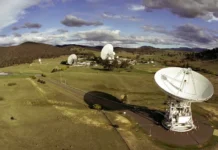DigitalOcean Container Registry (DOCR) offers a robust solution for managing Docker images in a private and secure manner. This service is essential for developers who need to store, organize, and access container images efficiently within their workflows. However, as with any system that deals with data storage, there comes a need for maintenance to ensure optimal performance and resource management. One such maintenance task is garbage collection, which plays a crucial role in the management of unused data within the registry.
### Understanding DigitalOcean Container Registry
Before delving into the specifics of garbage collection, it’s important to understand what the DigitalOcean Container Registry entails. Essentially, it is a private Docker image registry designed to help developers manage their container images. Container images are the building blocks of containerized applications; they include everything needed to run an application, such as code, runtime, and system libraries.
Over time, as developers push updates, new versions, and delete images, the registry accumulates unused data. This data includes untagged manifests and unreferenced blobs, which are essentially orphaned files that no longer serve a purpose. This extraneous data is often referred to as “garbage,” and if left unchecked, it can consume significant storage space and degrade performance.
### The Importance of Garbage Collection
Garbage collection within DOCR is the process of identifying and removing these unused elements to free up space and improve registry performance. The process is initiated on-demand by users, allowing them to periodically clean up their registry environments. By doing so, users can ensure that their storage resources are used more efficiently, which can lead to cost savings and better application performance.
### How Garbage Collection Works
The garbage collection process in DOCR is methodically structured to maintain the integrity and availability of the registry during the cleanup process. It involves two main phases:
#### Registry Metadata Scan
The first phase is the registry metadata scan. During this phase, the system scans all the entities within the registry, which are stored in a DigitalOcean Spaces bucket. These entities include various components such as manifests, tags, and blobs. The scan updates a metadata database that tracks the relationships between these components. This database is crucial as it helps determine which components are no longer in use and can be safely removed.
To put it simply, manifests can be thought of as the blueprints of container images, tags are labels that help identify them, and blobs are the actual data layers of the images. The metadata database records which tags are linked to which manifests and which blobs are used by those manifests. This information is vital for identifying untagged manifests and unreferenced blobs.
#### Deletion of Garbage
After the metadata scan, the system identifies all the untagged and unreferenced components. These are marked for deletion. Before the actual deletion, the registry is placed in a read-only mode to prevent any new images from being added, ensuring that no data is erroneously removed. However, users can still pull images from the registry during this time.
The process of deletion involves removing the identified garbage from both the registry and the metadata database. Once this is completed, the registry is returned to its normal state, allowing for regular operations to resume.
### Challenges and Innovations
One of the challenges faced with garbage collection is handling large registries. When a registry contains a significant amount of data, the garbage collection process can become time-consuming. If a user decides to cancel the process midway, the system previously had to restart from the beginning upon re-initiation, which was inefficient.
To address this, DigitalOcean introduced a feature known as partial garbage collection. This allows users to pause and resume the garbage collection process, picking up from where it left off. This innovation not only saves time but also allows users to manage their resources better, especially in environments with large volumes of data.
### Benefits of Regular Garbage Collection
Regular garbage collection is a best practice that offers numerous advantages. By routinely cleaning up unused data, users can reclaim valuable storage space, which can lead to reduced operational costs. Additionally, a cleaner registry is easier to manage and can result in improved performance of the registry itself, as well as the applications that rely on it.
Moreover, by eliminating outdated images, developers can streamline their workflows, leading to more efficient resource management and deployment processes. It also promotes a culture of cleanliness and organization within development teams, which can have positive downstream effects on overall productivity.
### Conclusion and Recommendations
Garbage collection is an essential process for maintaining a healthy and efficient DigitalOcean Container Registry. While the process itself is complex, involving intricate relationships between various components, DigitalOcean has simplified it for users with features like partial garbage collection.
For optimal performance, it is recommended that users perform garbage collection regularly. This proactive approach helps in keeping the registry in top condition, ensuring that storage costs are minimized and performance is maximized.
For users looking to implement garbage collection, detailed instructions and guidance can be found in the DigitalOcean documentation. This resource provides step-by-step directions on how to execute garbage collection effectively, making it accessible even to those who may not be familiar with the underlying technical details.
By maintaining a clean and efficient registry, developers can focus on what they do best—building and deploying innovative applications without being bogged down by unnecessary technical debt. For more information on using the DigitalOcean Container Registry and conducting garbage collection, you can visit the official DigitalOcean website.
For more Information, Refer to this article.


































